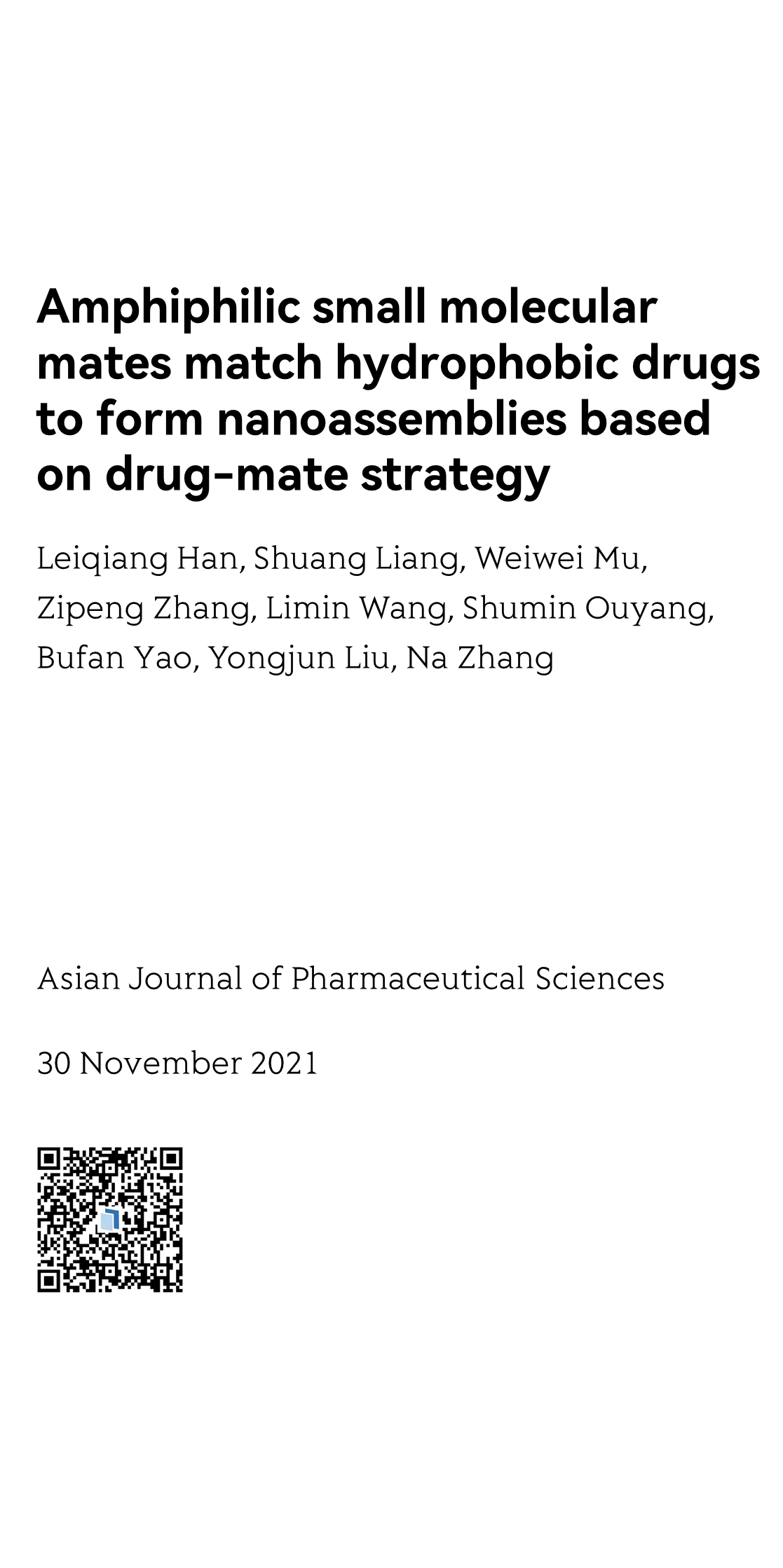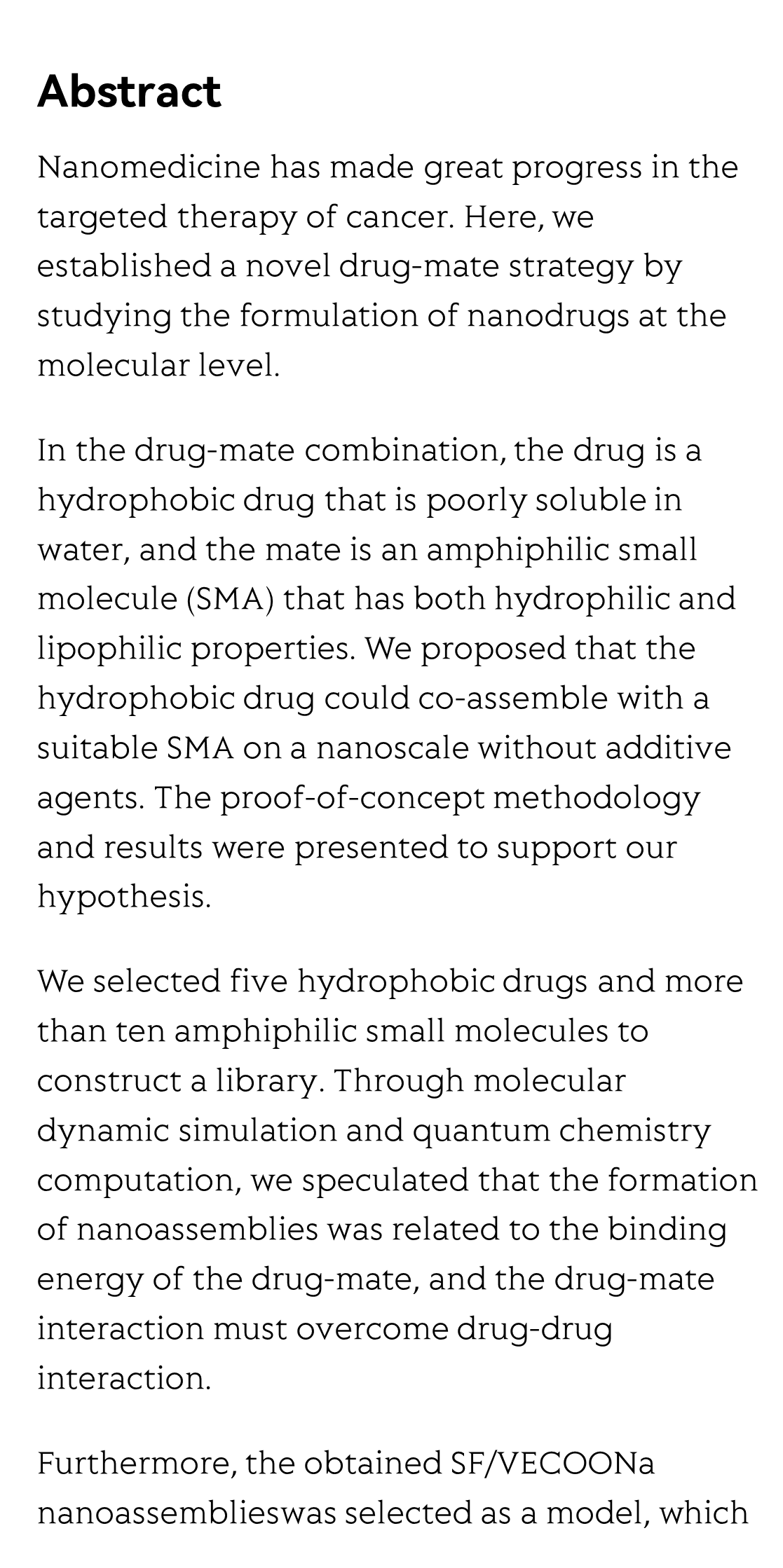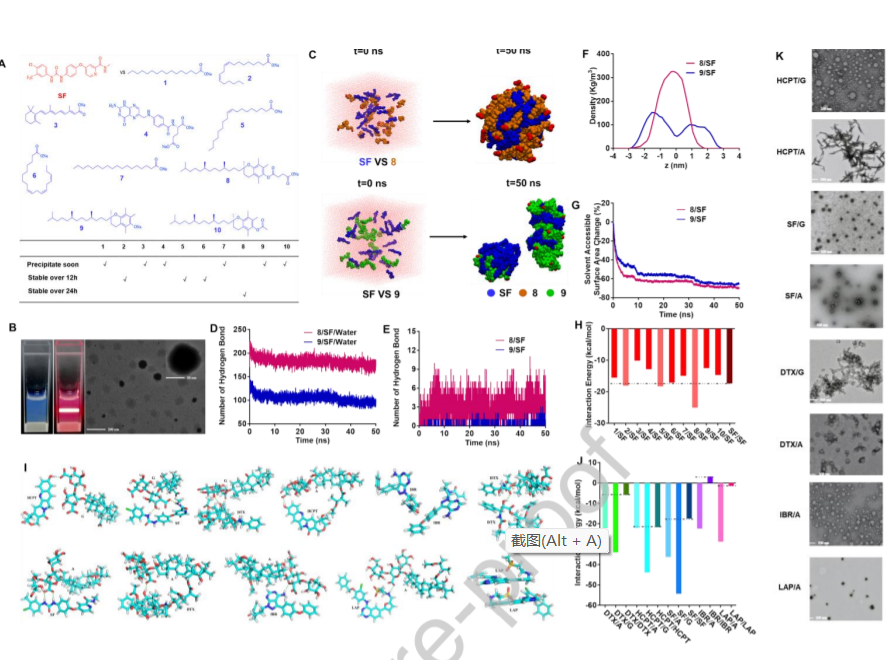(Peer-Reviewed) Amphiphilic small molecular mates match hydrophobic drugs to form nanoassemblies based on drug-mate strategy
Leiqiang Han 韩雷强, Shuang Liang 梁爽, Weiwei Mu 牟伟伟, Zipeng Zhang 张自鹏, Limin Wang, Shumin Ouyang, Bufan Yao, Yongjun Liu 刘永军, Na Zhang 张娜
Department of Pharmaceutics, Key Laboratory of Chemical Biology (Ministry of Education), School of Pharmaceutical Sciences, Cheeloo College of Medicine, Shandong University, Jinan 250012, China
中国 济南 山东大学齐鲁医学院药学院 化学生物学教育部重点实验室
Abstract
Nanomedicine has made great progress in the targeted therapy of cancer. Here, we established a novel drug-mate strategy by studying the formulation of nanodrugs at the molecular level.
In the drug-mate combination, the drug is a hydrophobic drug that is poorly soluble in water, and the mate is an amphiphilic small molecule (SMA) that has both hydrophilic and lipophilic properties. We proposed that the hydrophobic drug could co-assemble with a suitable SMA on a nanoscale without additive agents. The proof-of-concept methodology and results were presented to support our hypothesis.
We selected five hydrophobic drugs and more than ten amphiphilic small molecules to construct a library. Through molecular dynamic simulation and quantum chemistry computation, we speculated that the formation of nanoassemblies was related to the binding energy of the drug-mate, and the drug-mate interaction must overcome drug-drug interaction.
Furthermore, the obtained SF/VECOONa nanoassemblieswas selected as a model, which had an ultra-high drug loading content (46%), improved pharmacokinetics, increased bioavailability, and enhanced therapeutic efficacy. In summary, the drug-mate strategy is an essential resource to design exact SMA for many hydrophobic drugs and provides a reference for the design of a carrier-free drug delivery system.
Flicker minimization in power-saving displays enabled by measurement of difference in flexoelectric coefficients and displacement-current in positive dielectric anisotropy liquid crystals
Junho Jung, HaYoung Jung, GyuRi Choi, HanByeol Park, Sun-Mi Park, Ki-Sun Kwon, Heui-Seok Jin, Dong-Jin Lee, Hoon Jeong, JeongKi Park, Byeong Koo Kim, Seung Hee Lee, MinSu Kim
Opto-Electronic Advances
2025-09-25
Dual-frequency angular-multiplexed fringe projection profilometry with deep learning: breaking hardware limits for ultra-high-speed 3D imaging
Wenwu Chen, Yifan Liu, Shijie Feng, Wei Yin, Jiaming Qian, Yixuan Li, Hang Zhang, Maciej Trusiak, Malgorzata Kujawinska, Qian Chen, Chao Zuo
Opto-Electronic Advances
2025-09-25







